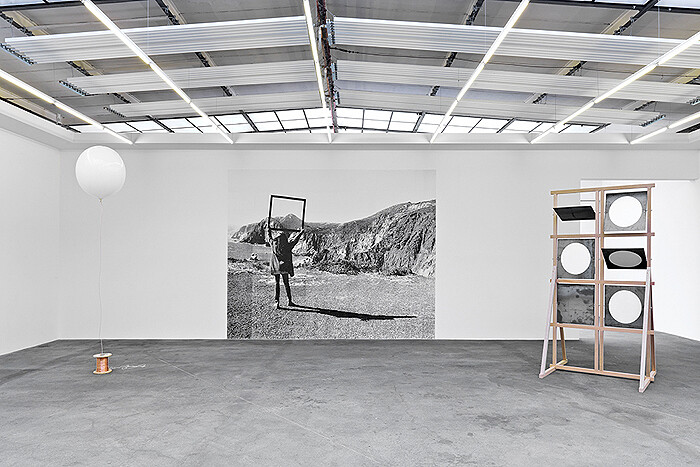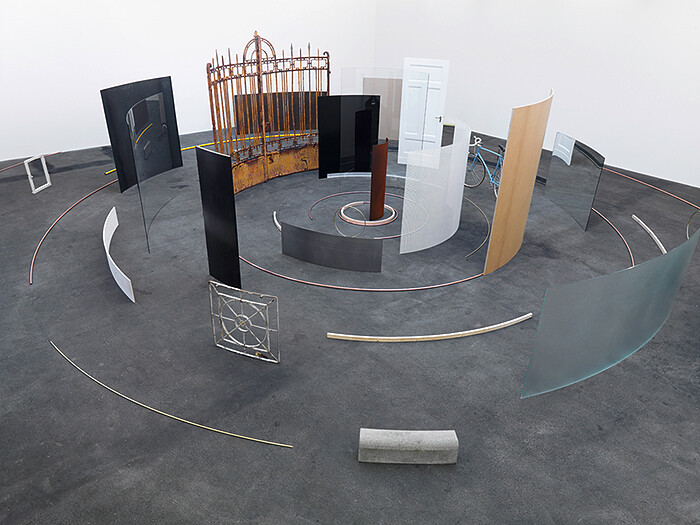Categories
Subjects
Authors
Artists
Venues
Locations
Calendar
Filter
Done
July 10, 2013 – Review
Amalia Pica’s “Low Visibility”
Ana Teixeira Pinto

Strictly speaking, you cannot interpret information; you can only decode it. Information is technical in nature; it concerns the precision with which a series of symbols are transmitted across a medium. These symbols can consist of anything—black font on paper, electrical pulses, colored flags.
“Low Visibility,” the first Berlin solo show by Argentinean artist Amalia Pica, revisits several outmoded information technologies—a recurring theme in Pica’s work. Shutter Telegraph (as seen on TV) (2013), recreates a shutter telegraph, one of the methods for optical communication that preceded the invention of electrical telegraphy. Also known as the Chappe telegraph after its inventor Claude Chappe, who devised it in 1792, or the Napoleonic Semaphore, the telegraph operates through the use of pivoting shutters or blades, placed atop a transmitting tower. Though the system was extremely successful in conveying intelligence—at its height, France had 556 telegraph stations—it had obvious atmospheric limitations. The gallery’s staff, unschooled in Morse code, is supposed to operate the shutters during the show, producing inevitably incoherent messages. Information is a measure of the freedom of choice, which is available when aligning a string of symbols. If I choose to start a sentence with “the,” chances are a noun will follow. The …
February 28, 2012 – Review
Alicja Kwade’s "In Circles"
Kimberly Bradley

“Round and round she goes; where she stops, nobody knows.” This little rhyme popped into my mind as I entered Johann König’s gallery for Alicja Kwade’s current solo show, “In Circles.” A mad array of 54 industrial and everyday objects loosely arranged in concentric rings fills the gallery’s front space in a large-scale installation titled Die Gesamtheit aller Orte (2012), which beckons to the viewer walk along each ring to see what he or she can see.
It’s easy to trace the curves in Kwade’s perfectly placed bent tubing and piping, but it takes a second to realize that even the installation’s larger, solid objects—a door, a window, mirrors, iron gates, sheets of metal, and even a bicycle—not only travel on her orbits’ paths, but have also been altered (in some cases just barely) to conform to them. The white door’s slight curvature is hardly noticeable until you’re at close range. The imposing rusty gates are generously rounded. There’s an almost imperceptible bend to a door with an oval mirror. A few copper pipes in the outermost rings disappear into the gallery wall; in the very center of the installation, a two-euro coin, propped up on its rim, and a sharply …